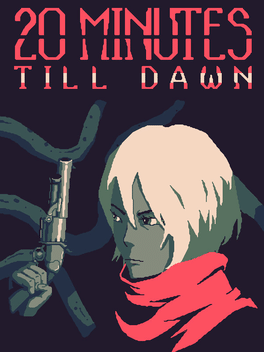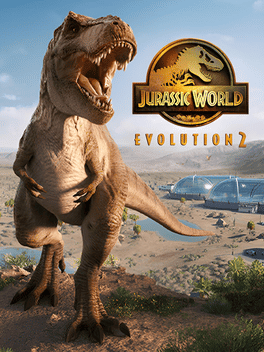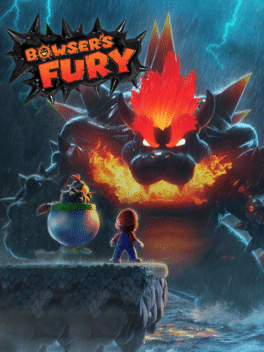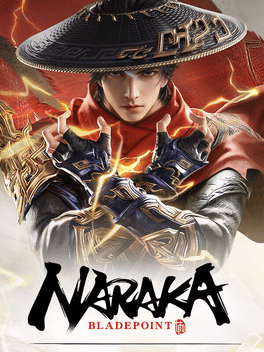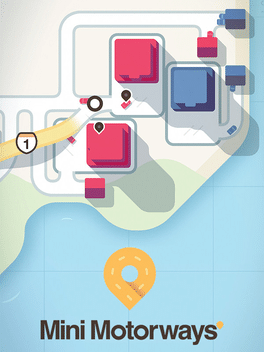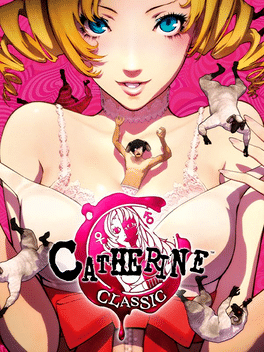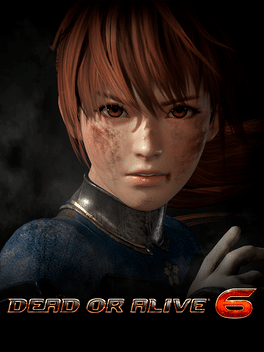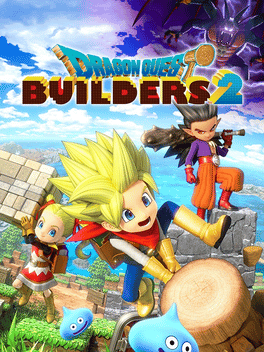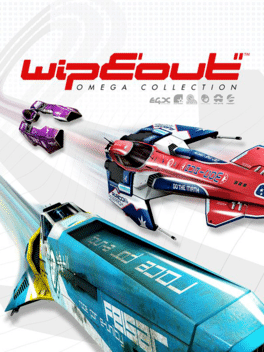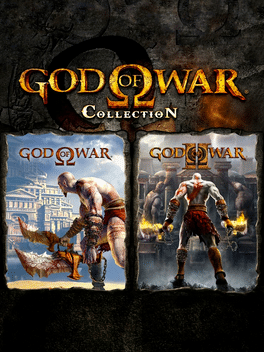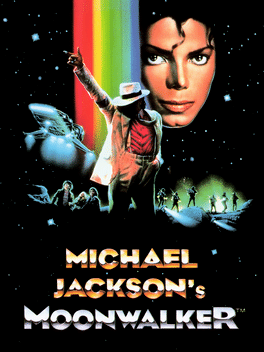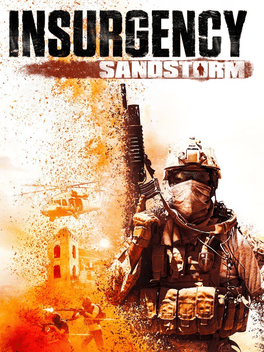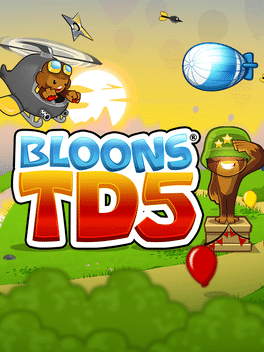Most Popular Games - Page 162
-
20 Minutes Till Dawn
2022
20 Minutes Till Dawn
2022
star 6.6Shoot down an ever growing horde of Lovecraftian monsters to survive the night. Choose from a variety of upgrades to create unique and game-breaking builds. Unlock a diverse cast of characters and weapons with unique powers. -
Jurassic World Evolution 2
2021
star 7.1Jurassic World Evolution 2 is the much-anticipated sequel to Frontier’s ground-breaking 2018 management simulation, Jurassic World Evolution, offering an all new narrative campaign voiced by cast members from across the Jurassic World film franchise, exciting new features, four engaging game modes, and an expanded roster of awe-inspiring dinosaurs. -
Bowser's Fury
2021
Bowser's Fury
2021
star 7.9Team up with Bowser Jr. in a free-roaming 3D adventure to stop his dad’s rampage. Run and jump across a series of islands to collect the mysterious Cat Shines, and battle against the colossal Fury Bowser whenever he emerges from the water to wreak havoc. -
F1 2020
2020
F1 2020
2020
star 8.7F1 2020 allows you to create your F1 team for the very first time and race alongside the official teams and drivers. Alternatively, challenge your friends in new split-screen with casual race options for more relaxed racing. Compete on 22 circuits, with current and classic content. -
Naraka: Bladepoint
2021
Naraka: Bladepoint
2021
star 6.1Naraka: Bladepoint is a 60-player action Battle Royale offering players insane mobility powered by parkour and grappling hook, a vast arsenal of melee and ranged weapons, and a roster of characters with powerful abilities—transform yourself into a gigantic Vajra Warrior and crush your enemies! -
Mini Motorways
2019
Mini Motorways
2019
star 8.4Mini Motorways is a strategy simulation game about designing the road map for a growing city. Build a traffic network, one road at a time, to create a bustling metropolis. Redesign your roads and place your motorways to get everyone where they need to go. How long can you keep the city moving? -
Catherine Classic
2019
Catherine Classic
2019
star 7.9An enhanced version of the original 2011 game. "... with enhancements for modern PC like 4K resolutions, unlocked framerate, customizable keyboard and mouse controls and optional Japanese Voice Over included." "Catherine: a tale of love, betrayal, and the terror of commitment. Experience the mature action-adventure-puzzle game unlike any other from the makers of the Persona series, now enhanced for PC in all its Classic glory. Is love over? Climb to the top or die trying." -
Dead or Alive 6
2019
Dead or Alive 6
2019
star 6.9Dead or Alive 6,produced by Koei Tecmo Games,features fast-paced 3D fighting entertainment with multi-tiered stages that are now both dynamic and critical parts of the competitive experience. -
WWE 2K19
2018
WWE 2K19
2018
star 7.3WWE 2K19 arrives as the latest entry to the flagship WWE video game franchise and features cover Superstar AJ Styles. WWE 2K19 will showcase a massive roster of popular WWE Superstars, Legends and Hall of Famers, as well as NXT favorites. Experience authentic WWE gameplay, extensive creation options, engaging match types, fan-favorite modes and much more! -
Football Manager 2018
2017
star 8.1They say football is a game of opinions and everyone has theirs, but it’s only yours that counts around here. You make the decisions now, from who you sign and who you sell, to how you manage your budget. Will you build tactics around the players at your disposal or train them in your vision of how the game should be played? Who you pick and who you bench will affect squad harmony, and it’s up to you to manage it. Every decision comes back to you. Get it right and you’ll be the star of the show, grabbing the newspaper headlines and dominating trends on social media. They’ll write your name in footballing folklore…if you succeed, of course. With unparalleled choices both on and off the pitch, all within the immersive footballing world, it’s time to decide what kind of manager do you want to be? Try your hand in 50 of the biggest footballing countries Win the title with any one of world’s top 2500 clubs Play the transfer market with over 600,000 real players and staff Watch your football vision come -
Dragon Quest Builders 2
2018
star 8.1Dragon Quest Builders 2 is a block-building role-playing game with a charming campaign and a robust multiplayer building mode that supports up to four players online. Create your customized character, team-up with your fearless friend Malroth, gather the skills required to become a full-fledged builder, and combat the Children of Hargon, a vile cult that worships destruction! Then, take your builder online and join your friends to collaborate and create something truly magnificent. Don’t let the name fool you, despite the 2, this is a completely standalone experience featuring new characters, an expansive world, unlimited building combinations, and a storyline that’s sure to satisfy longtime fans and newcomers alike! -
Trine 2: Complete Story
2013
star 8.6Trine 2: Complete Story is a sidescrolling game of action, puzzles and platforming. Trine 2: Complete Story fully integrates the main campaign of Trine 2 with the Goblin Menace expansion and the unlockable Dwarven Caverns level, combining them into one mighty fairytale. -
WipEout: Omega Collection
2017
star 8.8WipEout: Omega Collection brings together all the content from WipEout HD, WipEout HD Fury and WipEout 2048, enhanced for PS4 and PS4 Pro. -
DmC: Devil May Cry - Definitive Edition
2015
star 8.2DmC: Devil May Cry - Definitive Edition includes all the stylish action gameplay from the original release, all previously released downloadable content, including the Vergil's Downfall campaign plus brand new modes and additional content, making this the ultimate offering for Devil May Cry fans. Maximizing the potential of next-gen hardware, the game's high quality production values will run at a stunning 1080p and smooth 60 fps across PlayStation 4 and Xbox One. -
Kingdom Hearts II Final Mix
2007
star 8.6In September 2006, Square Enix announced Kingdom Hearts II Final Mix, featuring new scenes and gameplay elements. Like the first re-release, this version would combine English audio with Japanese text and also use the "Sanctuary" theme song instead of "Passion". New cutscenes, however, used Japanese voice acting, as they mostly featured Organization XIII members from Kingdom Hearts: Chain of Memories who did not yet have English voice actors; these scenes were later re-dubbed into English for the HD 2.5 Remix release. -
God of War Collection
2009
star 8.4God of War Collection brings the nonstop action of God of War and God of War II to modern consoles in HD. Experience the brutal world of ancient Greece as the legendary Spartan Kratos seeks revenge on Ares, the God of War, and tries to accomplish what no mortal has ever done... alter the course of Fate itself. -
Michael Jackson's Moonwalker
1990
star 6.5Several video games based on the 1988 Michael Jackson film Moonwalker. U.S. Gold published various games for home computers, released in 1989, whilst Sega developed two similarly themed beat 'em up video games in 1990; one released for arcades and another released for the Mega Drive/Genesis and Master System. -
Insurgency: Sandstorm
2018
star 7.5Insurgency: Sandstorm is a team-based, tactical FPS based on lethal close quarters combat and objective-oriented multiplayer gameplay. Experience the intensity of modern combat where skill is rewarded, and teamwork wins the fight. -
Dirge of Cerberus: Final Fantasy VII
2006
star 6.3Dirge of Cerberus: Final Fantasy VII is an action role-playing third-person shooter. As the first shooter game in the Final Fantasy series, the action is viewed from an over-the-shoulder perspective similar to Resident Evil 4, although players can switch to a first-person perspective if they wish. Defeating enemies yields EXP, and at the end of each stage, the player can either use that EXP to level up, increasing Vincent's stats, or convert it to Gil (the in-game currency), which can then be used to purchase items and equipment upgrades. -
Bloons TD 5
2011
Bloons TD 5
2011
star 7.2Five-star tower defense with unrivaled depth and replayability. The Bloons are back in full HD glory and this time they mean business! Build awesome towers, choose your favorite upgrades, hire cool new Special Agents, and pop every last invading Bloon in the best ever version of the most popular tower defense series in history. Featuring an all New Tower and Special Agent, glorious HD graphics, original Tracks and Special Missions, a whole new tier of Specialty Building upgrades, and a never-before-seen Monkey Lab to upgrade your towers, Bloons TD 5 delivers hours of fun and challenging play to fans and new players alike.

